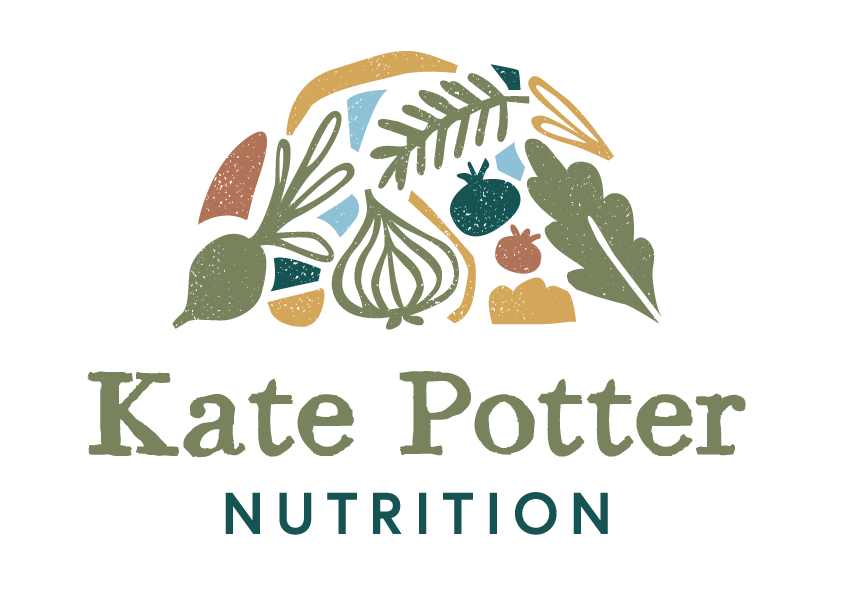High protein summer mezze dish
Two-lentil mejadra (Sami Tamimi, Boustany, adapted)
In this hot weather, I have been finding that a mezze approach to dinner works well.
What I mean by this is that I put a few different dishes out on the table that work well together and keep everyone happy…
It allows people to structure their own meals from the choices, and I save anything that doesn’t get eaten - and bring it out again next time!
This means I don’t have to start from scratch each time, I just add one or two more dishes.
The sight of the attractive dishes on the table, and the process of making our selections and spooning a little of each onto our plates helps to wake up our taste buds.
We can often assume that we will absorb all of the nutrients in our food, but this is rarely the case. Our ability to absorb nutrients varies. Producing sufficient digestive juices, such as stomach acid, digestive enzymes and bile depends on us being in a relaxed state and focusing on what we are eating. Waking up our taste buds is the best way to stimulate these vital digestive juices.
Eating a variety of dishes also allows us to take in a greater variety of plant fibres, which allows a more diverse gut microbiome to flourish - a key aspect of immune tolerance and autoimmune heath.
When constructing a mezze of dishes, it is important to make sure we include at least one dish that offers a complete protein source (all of the essential amino acids).
The dish below does this. A mejadra is a traditional and much loved staple of the Levant region. It is also very cheap to make, so is a great way of reducing the food budget without compromising on enjoyment.
It provides a complete protein source by combining a grain and a pulse. It is one of those dishes that tastes much better than you would expect from reading the ingredients list!
It can seem a little fiddly at first, but can become second nature once you’ve made it a few times.
Sumac is a spice from the Levant region and is a powerful antioxidant. It is available in the spice section of most supermarkets.
You could consider soaking the lentils first to make them easier to digest.
This is one of those dishes where you need to make sure you measure out the rice, lentils and water exactly and use a lid as instructed, otherwise the texture won’t be quite right.
Two-lentil mejadra (Sami Tamimi, Boustany, adapted)
Feeds 4 as part of a mezze
Active prep time 20 mins, total time 50 mins
Ingredients
200g short grain rice
150g green lentils, rinsed
100g red lentils, rinsed
2 tsp cumin seeds
1 1/2 tbsp coriander seeds
2 tbsp olive oil
2 tsp tomato paste
1/2 tsp ground turmeric
1 1/2 tsp ground allspice (or ground cloves)
1 1/2 tsp ground cinnamon
375 ml cold water
For the salsa
2-3 large onions (500g)
2 tbsp olive oil
10g fresh parsley, finely chopped
5g fresh mint, finely shredded
4 spring onions, finely sliced
2 tsp sumac
2 tsp lemon juice
To serve
5g fresh parsley
1 tsp sumac
Greek yoghurt (Soyade do a good plant based natural yoghurt)
Method
Preheat the oven to 170 degrees fan. Line a large oven tray with baking parchment.
Peel the onions and cut them into wedges (2cm at thickest point). Toss with olive oil and season. Place on the prepared tray in a single layer and roast for 40 minutes, or until soft and golden and starting to caramelise. Take out of the oven and set aside.
Meanwhile, rinse the rice well and place in a small bowl with plenty of cold water to soak.
Put both types of lentils together into a small lidded saucepan, cover with plenty of water, bring to the boil, and simmer for 10 minutes, or until the green lentils have softened but still have a little bite. (The red lentils will have completely softened by now as they cook more quickly.). Drain in a colander.
Place a medium pan over a medium heat and toast the cumin and coriander seeds for a minute or two, until fragrant. Add 2 tbsps of oil, the tomato paste and the spices, stir for a minute to two to combine, then add the drained rice, the lentils, the 375ml of cold water, a pinch of salt and a good grind of black pepper. Stir well to combine, bring to the boil, cover, and simmer at a very low heat for 15 minutes.
Remove from the heat, lift off the lid and cover the pan with clean tea towel (to absorb excess moisture). Seal tightly with the lid and set aside for 15 minutes.
Put the cooked onion wedges into a medium bowl with 1 tbsp olive oil and the rest of the salsa ingredients and mix well.
Traditional serving method: When ready to serve, remove the lid and tea towel from the mejadra and place a large flat plate over the open pan. Carefully but quickly invert the pan, holding both sides firmly. Leave the pot on the plate for two minutes, then slowly lift it off. (If you don’t have the patience for this, just spoon it into a bowl!)
Top with the salsa, scatter over the parsley leaves and sprinkle with the sumac. Serve with (plant based) yoghurt on the side.
Ideally serve this as part of a mezze, perhaps alongside a tabouleh, fattoush or Greek salad, with some pitta and humus. It also works well with a Lebanese moussaka (maghmour).
If you are looking for more food ideas, and more information on how to eat to help your autoimmune condition, you may want to consider my online, on demand autoimmune nutrition course, which shows you exactly how to reduce your inflammation levels and your risk of autoimmune flares.

